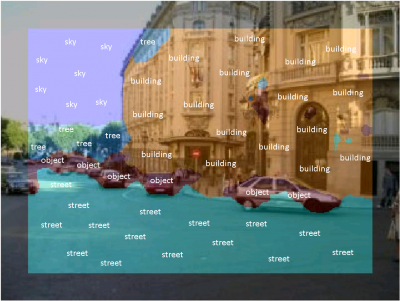Difference between revisions of "Scattering Networks for Scene Labeling"
From iis-projects
m (→Status: Available) |
m (→Status: Available) |
||
| Line 15: | Line 15: | ||
* [[:User:Lukasc | Lukas Cavigelli]] | * [[:User:Lukasc | Lukas Cavigelli]] | ||
* Michael Lerjen (mlerjen ät nari.ee.ethz.ch) | * Michael Lerjen (mlerjen ät nari.ee.ethz.ch) | ||
| + | This project is a collaboration of the communication theory group and the digital circuits and systems lab. | ||
[[Category:Digital]] [[Category:System Design]] [[Category:Available]] [[Category:Semester Thesis]] [[Category:Master Thesis]] [[Category:Lukasc]] | [[Category:Digital]] [[Category:System Design]] [[Category:Available]] [[Category:Semester Thesis]] [[Category:Master Thesis]] [[Category:Lukasc]] | ||
<!-- | <!-- | ||
Revision as of 23:09, 24 September 2015
Contents
Description
Scattering networks [1,2] extract characteristic features from signals by recursively applying the composition of the following three operations: convolution with a set of filter functions, a non-linearity, and a sub-sampling step. Such networks, combined with a classifier (such as, e.g., support vector machines) were successfully employed in a number of classification tasks [1,3]. In contrast to traditional convolutional neural networks which learn the filters from training data [4], scattering networks use pre-defined filters such as wavelets [1], curvelets [2], or shearlets [2]. While a scattering network-based classifier arguably leads to less flexible machine learning models than convolutional network-based classifiers which learn the filters, they potentially allow for faster implementations thanks to the structure of the pre-defined filters (e.g., tensorized wavelet filters).
Consequently, this project shall explore the application of scene labeling, which aims at assigning a class label such as “street”, “tree”, or “building” to every pixel of an image and is employed, e.g., in situational awareness systems [4]. Such systems often demand low-complexity and low-power scene labeling algorithms and the scattering transform may help to meet these needs.
The goal of this project is to develop a scattering network-based classifier for scene labeling and to realize a GPU implementation thereof (followed by VLSI/FPGA, if time permits).
Status: Available
Contact/Supervision:
- Michael Tschannen (michaelt ät nari.ee.ethz.ch)
- Thomas Wiatowski (withomas ät nari.ee.ethz.ch)
- Lukas Cavigelli
- Michael Lerjen (mlerjen ät nari.ee.ethz.ch)
This project is a collaboration of the communication theory group and the digital circuits and systems lab.
Prerequisites
- Matlab, C programming, linear algebra
Character
- 0%-20% Theory
- 80%-100% Programming
Professor
tbd
References
- J. Bruna and S. Mallat, “Invariant scattering convolution networks,” IEEE Trans. Pattern Anal. Mach.Intell., vol. 35, no. 8, pp. 1872-1886, 2013. link
- T. Wiatowski and H. B¨olcskei, “Deep convolutional neural networks based on semi-discrete frames,” Proc. of IEEE International Conference on Information Theory (ISIT), pp. 1212-1216, 2015. link
- J. Andén and S. Mallat, “Deep scattering spectrum,” IEEE Trans. on Signal Process., vol. 62, no. 16, pp. 4114-4128, 2014. link
- Y. LeCun, L. Bottou, Y. Bengio, and P. Haffner, “Gradient-based learning applied to document recognition,” Proc. of the IEEE, pp. 2278-2324, 1998. link
- L. Cavigelli, M. Magno, and L. Benini, “Accelerating real-time embedded scene labeling with convolutional networks,” Proc. of ACM/EDAC/IEEE Design Automation Conference (DAC), pp. 1-6, 2015 link
